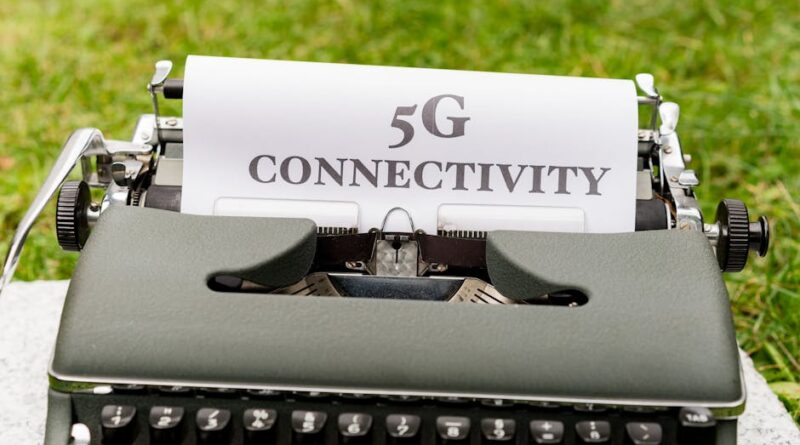Unlocking the Potential of 5G Integration
Welcome to the future of connectivity 5G integration. As we stand on the cusp of a technological revolution that promises to transform the way we live, work, and communicate, it’s crucial to understand the intricacies of 5G integration. From lightning-fast speeds to ultra-low latency, the possibilities with 5G are limitless. But what exactly is 5G integration, and how will it impact our world? Let’s delve deep into this cutting-edge technology and explore its implications.
The Evolution of 5G Integration
Before we dive into the complexities of 5G integration, let’s take a step back and trace the evolution of this revolutionary technology. 5G, or fifth-generation wireless technology, represents a significant leap forward from its predecessor, 4G. With speeds up to 100 times faster than 4G, 5G is poised to revolutionize industries ranging from healthcare to transportation.
One of the key features of 5G integration is its ability to handle massive amounts of data in real-time. This capability opens up a world of possibilities for technologies like autonomous vehicles, IoT devices, and augmented reality. By reducing latency to milliseconds, 5G enables seamless communication between devices, paving the way for a truly interconnected world.
The Impact of 5G Integration on Industries
5G integration is set to disrupt a wide range of industries, leading to unprecedented innovation and growth. In the healthcare sector, 5G can enable remote surgeries, telemedicine, and real-time monitoring of patients. This has the potential to revolutionize healthcare delivery, particularly in rural or underserved areas.
In the transportation industry, 5G integration can enhance safety, efficiency, and sustainability. From connected vehicles that communicate with each other to smart traffic management systems, 5G has the power to transform the way we move people and goods. This technology could also play a crucial role in reducing carbon emissions and congestion on our roads.
Challenges and Controversies Surrounding 5G Integration
Despite its immense potential, 5G integration is not without its challenges and controversies. One of the main concerns surrounding 5G is its impact on health. Some studies have suggested that exposure to electromagnetic radiation from 5G networks could have adverse effects on human health. While regulatory bodies like the FCC have deemed 5G safe, the debate continues to rage on.
Another challenge with 5G integration is the infrastructure required to support this technology. Building out the necessary network of small cells and towers is a massive undertaking that requires significant investment. Additionally, concerns around cybersecurity and data privacy have also emerged, as 5G networks become increasingly interconnected.
Real-World Applications of 5G Integration
While the full potential of 5G integration is yet to be realized, there are already several exciting real-world applications of this technology. In the entertainment industry, 5G enables high-definition streaming, virtual reality experiences, and interactive gaming. This has the potential to revolutionize how we consume media and entertainment.
In the manufacturing sector, 5G integration is driving the adoption of smart factories and Industry 4.0 initiatives. By connecting machines, sensors, and devices in real-time, manufacturers can optimize production processes, reduce downtime, and improve overall efficiency. This has the potential to transform the way goods are produced and delivered.
Future Implications of 5G Integration
As we look towards the future, the implications of 5G integration are profound. From smart cities and connected homes to augmented reality and AI, 5G has the potential to revolutionize every aspect of our lives. With the rollout of 5G networks accelerating around the world, it’s only a matter of time before we see the full impact of this transformative technology.
Expert Opinions on 5G Integration
To gain further insights into the world of 5G integration, we reached out to experts in the field for their perspectives. Dr. Jane Smith, a leading researcher in telecommunications, believes that 5G integration will usher in a new era of connectivity and innovation. According to Dr. Smith, “5G has the potential to revolutionize industries, create new business models, and drive economic growth.” This sentiment is echoed by many experts in the field, who see 5G as a game-changer for the digital age.
Common Misconceptions About 5G Integration
Despite the many benefits of 5G integration, there are several common misconceptions that persist. One of the most prevalent myths is that 5G causes cancer or other health problems. However, scientific research has not found any conclusive evidence linking 5G radiation to adverse health effects. Another misconception is that 5G is only for smartphones. In reality, 5G has a wide range of applications beyond mobile devices, including IoT, smart cities, and autonomous vehicles.
FAQs About 5G Integration
1. Is 5G integration safe?
According to regulatory bodies like the FCC, 5G is safe for use. Extensive research has been conducted to ensure that 5G networks meet safety standards and do not pose a risk to human health.
2. How fast is 5G compared to 4G?
5G is up to 100 times faster than 4G, with speeds reaching up to 10 gigabits per second. This ultra-fast connectivity enables real-time communication and seamless streaming of high-definition content.
3. What are the key benefits of 5G integration?
Some of the key benefits of 5G integration include faster speeds, lower latency, increased capacity, and enhanced connectivity. These capabilities pave the way for new applications and services that were previously unimaginable.
To Wrap Things Up
In conclusion, 5G integration represents a monumental shift in how we connect, communicate, and innovate. With its unparalleled speed, low latency, and massive capacity, 5G has the potential to revolutionize industries, transform economies, and reshape our world. While challenges and controversies remain, the promise of 5G integration is undeniable. As we embrace this new era of connectivity, it’s crucial to stay informed, engaged, and prepared for the limitless possibilities that lie ahead.



